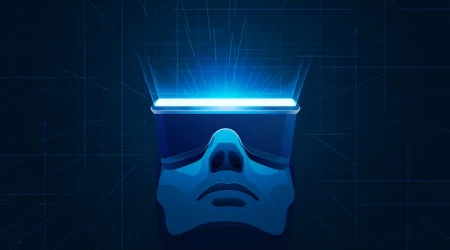What Will Be the Next Big Thing in Personal Technology?
The next breakthrough in personal technology may be mind control. With this new technology, you can perform any task with just your mind, from opening apps to playing videos. You can edit images, send texts, adjust the screen brightness, and create movies from videos.
Table of Contents
Air-To-Air Charging
In a recent report on XDA-Developers, a Motorola executive demonstrated a prototype for over-the-air charging. The company said it could power up a phone from a few meters away. However, it did not mention when the tech will be available on consumer devices. Until then, we can imagine that air-to-air charging is not far off.
Xiaomi’s air-space charging pile is composed of 144 antennas that can detect the position of a mobile phone. It can deliver five watts of charging within a few meters. Xiaomi hopes to apply the technology to other products in the future, including wearable devices. Xiaomi is also developing a new version of its air-space charging pile, which features five-phase interference antennas.
Air-to-air charging could make smartphones smaller. Because the chip can receive power from anywhere, smartphone makers could experiment with different sizes. However, it has been challenging to see widespread adoption in consumer electronics. However, WiTricity Corporation, which showcased its wireless charging at CES 2016, hopes to use this technology to power electric cars. Although the technology has many benefits, it also has some caveats.
As wireless charging continues to make inroads into the manufacturing and healthcare industries, it is now making its way into more everyday use. With the right technology, tiny IoT devices could receive power many feet away from the charger. Currently, the most widely used wireless charging technologies rely on an electromagnetic field between two copper coils, limiting the distance between a device and a charging pad. Apple has already incorporated wireless charging into its iPhone 8 and iPhone X models.
The Mi Air Charge system uses beamforming technology, a technique similar to that used in wireless routers, to transmit power to a handset from several feet away. The Mi Air Charge system is compatible with multiple devices in a room.
Quantum Computing
Although quantum computers are still decades away from mass market adoption, they are already being used in practice and application-based trials. Though the technology is still in its infancy, the government is investing billions into developing quantum computers. In fact, in the next ten years, the European Union will invest EUR1 billion in quantum-related research to develop the technology for consumer use. Russia is also participating in this race and has already launched its first quantum computer prototype. IBM and Fraunhofer-Gesellschaft are collaborating on the development of quantum computers.
Companies such as D-Wave are developing cloud-based quantum computing software. This software will help consumers access quantum-powered computers and focus on machine learning, optimization, and materials science. D-Wave has already raised more than $200 million from investors. Another Canadian startup, Rigetti, has raised a similar amount of funding. It also offers a cloud-based quantum computer called the Rigetti.
Cloud-based quantum computing services will help companies explore the future of quantum computing. Likely, we will not see any personal quantum computers or mobile quantum devices until the third decade. But it will be possible to experiment with these technologies today. The real money will be in the business opportunities that quantum computing will present. Businesses will use the technology in various ways, from enhanced risk analysis and pricing complex derivatives to intelligent vehicle routing.
The world has been waiting decades to see if quantum computers can be used in practical situations. This is because quantum computers can process massive amounts of data. In a recent experiment, Google’s quantum computer, “Sycamore,” demonstrated the supremacy of quantum computers over conventional computers. A 53-qubit quantum computer completed the task in three minutes and 20 seconds compared to the ten million-year-old record set by the most powerful supercomputer.
Stretchable Electronics
The next generation of video gamers or humans will be able to wave their empty hands into the air. A new wearable device will be able to help those who cannot use their hands to express their wishes. Stretchable electronics are also a great way to integrate electronics into clothing and other items. These bright patches measure how much sun a person is exposed to and can be used to adjust the sunscreen they apply. Another application would be a moisturizer sticker that could measure how much water your skin is holding.
The main obstacle to commercializing stretchable electronics is ensuring they do not suffer physical damage from bending and stretching. However, researchers are already working on new ways to solve this issue and have devised several strategies. One method involves using intrinsically stretchable materials or designing a stretchable structure like an origami. Once the technology becomes more widely available, it will change the face of personal technology.
DuPont has been creating flexible circuitry for decades. The company started with a need for a way to integrate electronics into clothing that could stretch and snap back to their original size. It was also crucial for the electronics to withstand the elements. Further, stretchable electronics will be more durable than traditional electronics, and many wearable devices will be waterproof.
Read More: Prepare Your Business For the Future of the Internet With Web 3.0
Brain-Reading Technology
Though mind-reading technology has evoked ethical debates, it is also a promising future for healthcare. The BrainGate consortium is already using BCI technology to communicate. This technology could provide a new level of freedom and autonomy to people confined to a wheelchair or a bed. The technology may also be used in the smart home to control lighting and climate. Though it is difficult to say whether brain-reading technology will become the next big thing in personal technology, it is already a fascinating concept.
It has been widely speculated that brain-reading technology will revolutionize how we communicate with other machines. A brain-reading technology (BCI) can decipher and write information from the brain to a machine. This technology could allow us to control robotic arms and paralyzed limbs using brain signals. It could even help with communication for those with neurological disorders and spinal cord injuries.
While we may not be able to see the brain through a microscope, scientists are developing a technique that can “read” the brain without invasive surgery. Researchers are developing a non-invasive method, but the results are not yet conclusive. While this technology is far from being commercially available, it is already a revolutionary concept in medical research.
A significant risk is the lack of regulation surrounding the development of brain-reading technology. There are no laws regulating the use of brain-reading technology; it is not yet clear what the regulatory framework will be. If the market is allowed to flourish, tech giants will likely be quick to jump into the breach and collect and store all kinds of brain data. Indeed, Facebook’s stock didn’t fall apart after the $5 billion fine.




Leave a Reply